The Cyrillic script holds significant importance across Eastern Europe, Central Asia, and parts of Siberia, standing as a vital communication tool for over 250 million people. Originally developed to support the spread of Christianity, the Cyrillic script has evolved to encompass dozens of languages, each with its own adaptations.
This blog explores the history, evolution, variations, facts, and potential future of the Cyrillic script.
History of the Cyrillic Script
The Cyrillic script, one of the most widely used scripts in the world, has a rich and complex history spanning more than a millennium. It was first developed in the 9th century AD in the First Bulgarian Empire.
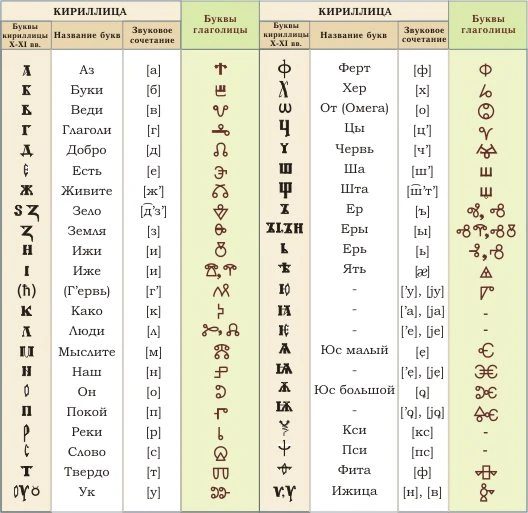
Saint Cyril and Saint Methodius, two Byzantine missionaries, are credited with laying the foundation for the script as part of their mission to spread Christianity among Slavic-speaking peoples. However, it was actually the disciples of Cyril and Methodius who created the early version of the Cyrillic script, drawing inspiration from the Greek alphabet and adapting it to represent the sounds unique to Slavic languages.
Key Milestones in Cyrillic Script History
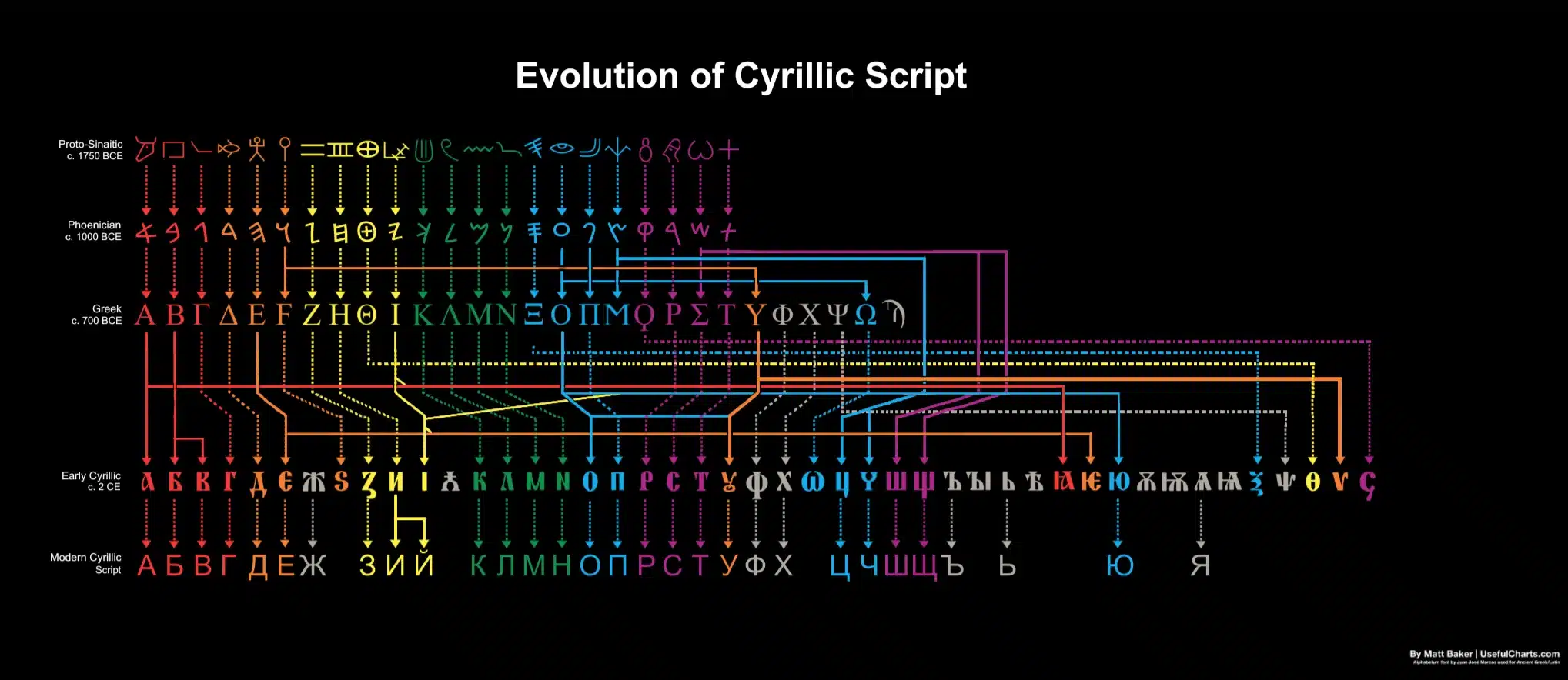
1. 9th Century
The script emerged to spread Christianity among Slavic communities. Cyril and Methodius created an earlier script called Glagolitic, which heavily influenced the design of Cyrillic.
2. 10th–12th Centuries
The Cyrillic alphabet spread through religious texts as Christianity expanded in Eastern Europe, especially in regions like Bulgaria and Serbia.
3. 14th Century
The script reached the Kievan Rus’ region (modern-day Russia, Ukraine, and Belarus), where it became the foundation of Russian and other Slavic languages.
4. 18th Century Reforms
Under Peter the Great, the Russian alphabet was reformed and simplified to support state administration and modernization, aligning more closely with Greek and Latin alphabets.
5. 20th Century Expansion
The Soviet Union’s influence led to the adoption of Cyrillic in non-Slavic languages across Central Asia, such as Kazakh and Kyrgyz, facilitating communication within the USSR.
Cyrillic Alphabet and Writing System
The Cyrillic alphabet writing system, while adaptable, maintains certain rules and conventions that are consistent across languages that use it. Its characters are unique, distinct, and specifically designed to accommodate the phonetic needs of various languages, especially those in the Slavic and Turkic language families.
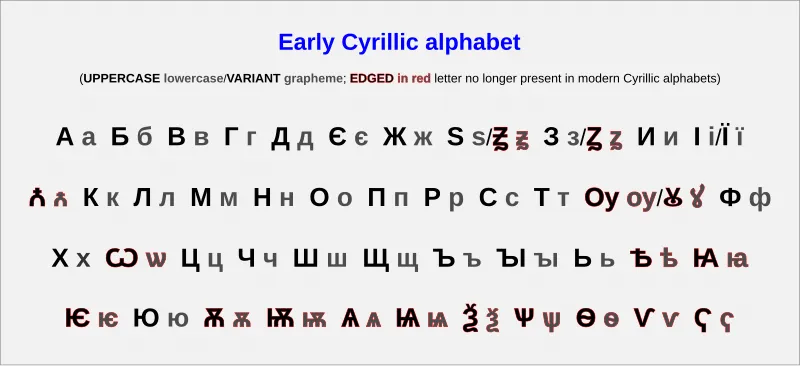
Characteristics of the Cyrillic Alphabet
1. Character Range
The number of characters varies significantly across languages. Russian has 33 characters, Bulgarian has 30, and Serbian uses 30 as well. Mongolian Cyrillic, on the other hand, has additional letters to accommodate its own phonetic requirements.
2. Alphabetic Order
Like most alphabets, Cyrillic follows a set alphabetical order, though specific sequences can vary by language. Most Cyrillic alphabets start with “А, Б, В” (A, B, V) and progress in a similar pattern to the Greek alphabet, which inspired it.
3. Letter Case
Cyrillic uses both uppercase and lowercase letters, with distinct rules for capitalization. Capitalization is generally used at the beginning of sentences, for proper nouns, and in certain formal or official uses, similar to Latin script conventions.
4. Orthographic Rules
Cyrillic follows specific orthographic conventions, such as rules for vowel reduction, palatalization, and consonant clusters, which vary across languages. For example, Russian has soft (palatalized) and hard (non-palatalized) consonants, marked by special letters and modifiers like the “ь” (soft sign).
5. Accent Marks
In some languages, such as Russian and Bulgarian, accent marks are used to indicate stress in words. However, these are typically optional and used for clarification rather than as standard spelling rules.
Which languages use the Cyrillic alphabet?
The Cyrillic alphabet is predominantly used in Eastern Europe and Central Asia, though it appears in a range of countries and regions, each adapting the script to fit their language. Below are some primary languages and regions that use the Cyrillic alphabet.
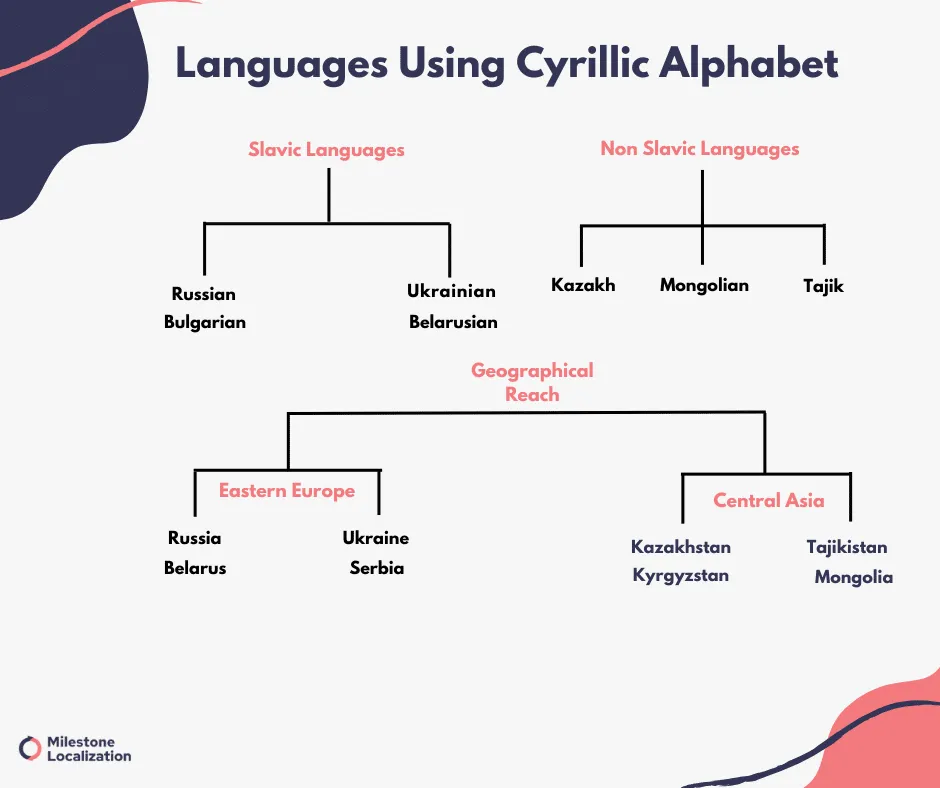
1. Primary Languages Using Cyrillic Alphabet
Slavic Languages: Russian, Bulgarian, Serbian, Ukrainian, and Belarusian.
Non-Slavic Languages: Kazakh, Kyrgyz, Mongolian, and Tajik.
Extended Use: Smaller ethnic groups within Russia and Central Asia also use Cyrillic-based alphabets.
2. Geographical Reach
Eastern Europe: Russia, Belarus, Ukraine, Serbia, Bulgaria
Central Asia: Kazakhstan, Kyrgyzstan, Tajikistan, Mongolia
Reliable Language Translation Services
Interesting Facts About Cyrillic Script
The Cyrillic script is deeply intertwined with the culture, identity, and history of the people who use it. Here are some fascinating facts that showcase its importance and influence:
1. Cultural Symbol
For many nations, Cyrillic is more than just an alphabet; it’s a symbol of national identity. In Russia, for example, it represents a connection to historical texts, cultural values, and even political strength.
2. Cyrillic in the European Union
When Bulgaria joined the EU in 2007, Cyrillic became the EU’s third official alphabet, alongside Latin and Greek. This brought increased attention to Cyrillic’s role in European culture and communication.
3. Latinization Trends
Several Central Asian countries that once used Cyrillic during Soviet rule are now adopting the Latin alphabet for modernization and international alignment. Kazakhstan, for instance, has begun a gradual transition to Latin characters.
4. Alphabet Diversity
Although Cyrillic is considered a single script, it has over a dozen variations across different languages, with each version adapted to fit the phonetic nuances of the respective language.
5. Reverse Latin Characters
Some Cyrillic letters look like backward Latin letters. For example, the Cyrillic “Я” resembles a reversed “R” but sounds like “ya.” Similarly, “И” looks like an “N” but sounds like “i.”
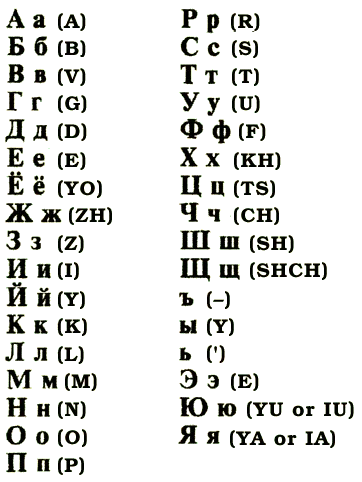
6. Characters with Spirit
Russian uses a “hard sign” (ъ) and a “soft sign” (ь) to indicate pronunciation nuances, such as hard or soft consonants. These letters have no sound by themselves but are critical to proper pronunciation.
7. Digital Influence
While Cyrillic is widely used, English’s dominance on the internet has prompted more bilingual Cyrillic and Latin use in online platforms, particularly among younger generations.
Also read: 10 Interesting Facts About Greek : Origin & Evolution
Variations in Cyrillic Characters Across Languages
Although derived from the same base script, Cyrillic alphabets vary significantly across languages to account for unique sounds and grammatical structures. Here’s how the Cyrillic script adapts:
1. Common Variations
Character Addition: Languages like Serbian and Bulgarian have fewer characters than Russian, while Mongolian includes unique characters not used in Slavic languages.
Diacritic Marks: Some languages, such as Serbian, add diacritic marks to distinguish different sounds.
Phonetic Adjustments: Kazakh and Kyrgyz include additional letters to represent sounds specific to Turkic languages.
2. Examples of Character Differences
Russian: Uses 33 characters, including unique letters like “Ы” (pronounced “y” in “my”).
Serbian: Uses 30 letters, dropping some Russian characters and adding unique sounds.
Mongolian Cyrillic: Includes “Ү” and “Ө” to represent sounds absent in Russian and Slavic languages.
The modifications showcase how flexible Cyrillic is, allowing diverse languages to retain their linguistic identity while using a shared script.
Cyrillic Script vs Latin vs Devanagari Script 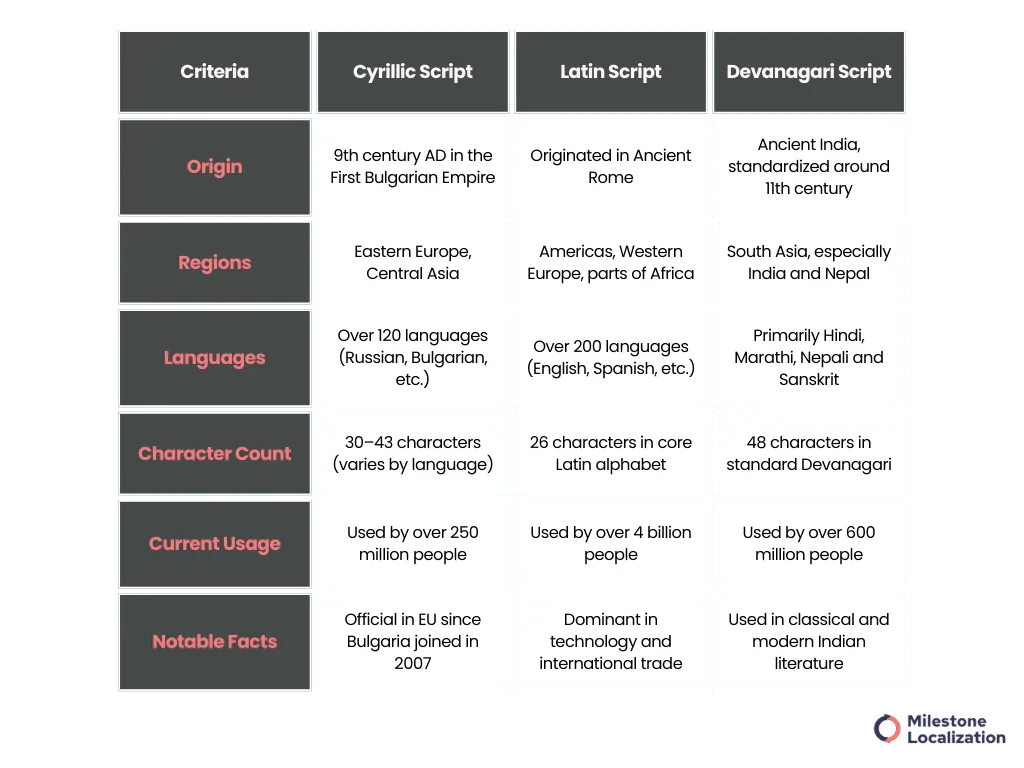
Each script has a distinct origin, linguistic focus, and geographical spread. The table below compares the Cyrillic script with Latin and Devanagari, highlighting key differences
Future of the Cyrillic Script
The future of the Cyrillic script appears promising yet challenging, as geopolitical shifts and digital demands push some countries to adopt Latin alternatives. Several trends influence the Cyrillic script’s future:
1. Digital Influence
English’s dominance on the internet encourages bilingual usage, with some Cyrillic-using countries adopting Latin for global communication while maintaining Cyrillic in domestic and cultural contexts.
2. Government Policies
Kazakhstan, for instance, has begun a gradual transition to the Latin alphabet to ease international integration. Other Central Asian nations are considering similar changes to enhance global accessibility.
3. Cultural Revival
On the other hand, countries like Russia and Bulgaria emphasize Cyrillic as part of their national identity, preserving it as a symbol of cultural and historical heritage.
4. Educational Initiatives
Educational systems in Cyrillic-using regions may increasingly support bilingual fluency, balancing Cyrillic for cultural identity with Latin for global interactions.
In an interconnected world, the Cyrillic script faces pressure to modernize while remaining rooted in tradition. Digital advancements, like improved typefaces and translation technology, are making Cyrillic more accessible online. The script will likely continue to adapt, staying relevant in both cultural preservation and global communication.
Conclusion
The Cyrillic script stands as a testament to cultural resilience and adaptability. Its journey from a religious tool to a primary script for diverse languages highlights its flexibility and deep cultural roots. As the world becomes increasingly interconnected, Cyrillic faces the challenge of balancing tradition with modernization.
While some regions are exploring Latinization, others remain committed to preserving Cyrillic as a key element of their identity. With ongoing efforts to adapt Cyrillic to digital media and maintain its relevance in education, the script is poised to continue its legacy as a powerful symbol of cultural heritage and linguistic diversity.
Also read: Latin Alphabet: Languages That Use it & Variations
Are You Looking for professional Translation Services?
FAQS
Who created the Cyrillic script and when was it developed?
The Cyrillic script was developed in the 9th century AD by the disciples of Saints Cyril and Methodius, Byzantine missionaries who created the earlier Glagolitic script for Slavic peoples.
What was the purpose behind the creation of the Cyrillic alphabet?
It was created to translate Greek religious texts into Slavic languages and to help spread Christianity among Slavic-speaking peoples of Eastern Europe.
How is the Cyrillic script related to the Greek alphabet?
The Cyrillic alphabet is based on the Greek uncial script, borrowing many Greek letters and adding new ones to represent Slavic sounds not found in Greek.
Which languages use the Cyrillic alphabet today?
Today, the Cyrillic script is used by over 50 languages, including Russian, Bulgarian, Serbian, Ukrainian, Belarusian, Kazakh, Kyrgyz, Macedonian, Tajik, and Uzbek, among others.
How has the Cyrillic alphabet evolved over time?
The script underwent various reforms to simplify and modernize it, such as adding lowercase letters under Peter the Great and introducing new letters like Ё, Э, and Й in Russian.
What cultural significance does the Cyrillic script hold?
Cyrillic symbolizes Slavic cultural and religious identity, representing the heritage of Eastern Orthodox Christianity and the shared linguistic traditions of many Slavic nations.




